-
TrackoBit
Manage commercial vehicles with the new-age Fleet Management Software
TrackoBit -
TrackoField
Streamline your scattered workforce with Field Force Management Software
TrackoField -
Features Resources
-
Blog
Carefully curated articles to update you on industrial trends. -
White Paper
Insightful papers and analysis on essential subject matters. -
Glossary
Explore an alphabetical list of relevant industry terms. -
What’s New
Get TrackoBit & TrackoField monthly updates here. -
Case Study
Explore the cases we solved with our diverse solutions. -
Comparisons
Compare platforms, features, and pricing to find your best fit.
-
About Us
Get to know TrackoBit: our team, ethos, values, and vision. -
Careers
Join the most dynamic cult of coders, creatives and changemakers. -
Tech Support
Learn about our technical support team and services in detail. -
Events
Check out the exhibitions where we left our marks and conquered. -
Contact Us
Connect with us and let us know how we can be of service.
6 Ways Route Optimization Software Can Boost Your Revenue in 2026
- Author:Tithi Agarwal
- Read Time:7 min
- Published:
- Last Update: January 7, 2026
Table of Contents
Toggle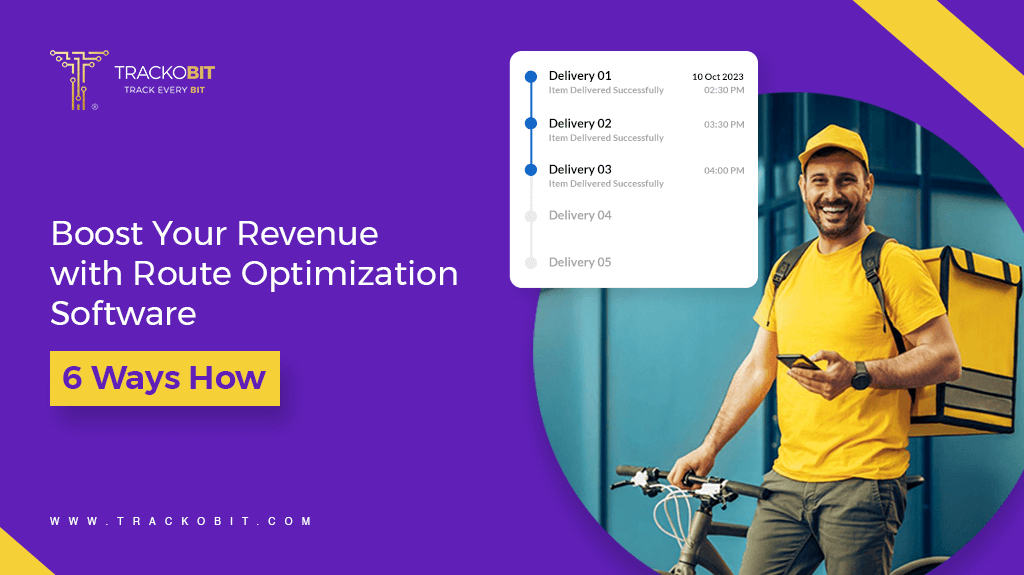
Are you looking for ways to make deliveries as economical as possible? Well, here are 6 ways route optimization software helps businesses optimise their deliveries.
Table of Contents
Toggle
If you are tired of costly, time-consuming, and delayed deliveries, then chances are that your operational system lacks the key element—route optimization. Without it, making delivery operations economical and timely will be hard—at least not without the dispatcher trying out hundreds of permutations and calculations to make the halt sequencing as optimised as possible.
But with the help of route optimization, things get done in a snap. From route planning and multi-stop sequencing to considering 120+ factors before suggesting the shortest and best-suited routes, the software has it all.
Here are 6 ways route optimisation software is helping businesses boost their revenue in 2026.
What is a Route Optimisation Software?
Route optimization software is a technology solution that uses real-time data and sophisticated algorithms to help organisations find and plan the most efficient delivery routes. To optimise routes and guarantee prompt and economical deliveries, it considers more than 100 variables, including traffic conditions, distance, delivery windows, vehicle capacity, and more.
The Cost of Inefficient Route Planning
Ineffective route planning can cost organisations a lot of money through higher fuel bills and more frequent auto maintenance. It is important for organisations seeking to enhance their profitability and optimise their operations to acknowledge the financial consequences of implementing less-than-ideal route planning. Expenses such as;
Excessive Fuel Expenses
Fuel costs are one of the most obvious and immediate effects of poor route planning. Longer and less efficient routes mean vehicles use more fuel, affecting last-mile businesses’ operating expenses.
Increased Vehicle Maintenance Costs
Extended or ineffective routes increase vehicle wear and tear. Increased tyre wear, more frequent oil changes, and faster total vehicle depreciation are just a few of the problems resulting from driving a fleet for excessive miles. This reduces the lifespan of the company vehicle fleet and adds to the hefty costs of maintenance and replacements.
Time-related Costs
Route planning inefficiencies also result in higher time-related expenses. Drivers may be paid overtime due to their more driving time or stretched service delivery time, which adds to heavy labour costs. In addition, companies that have contractual obligations to fulfil deadlines may be subject to penalties or fines for delayed delivery.
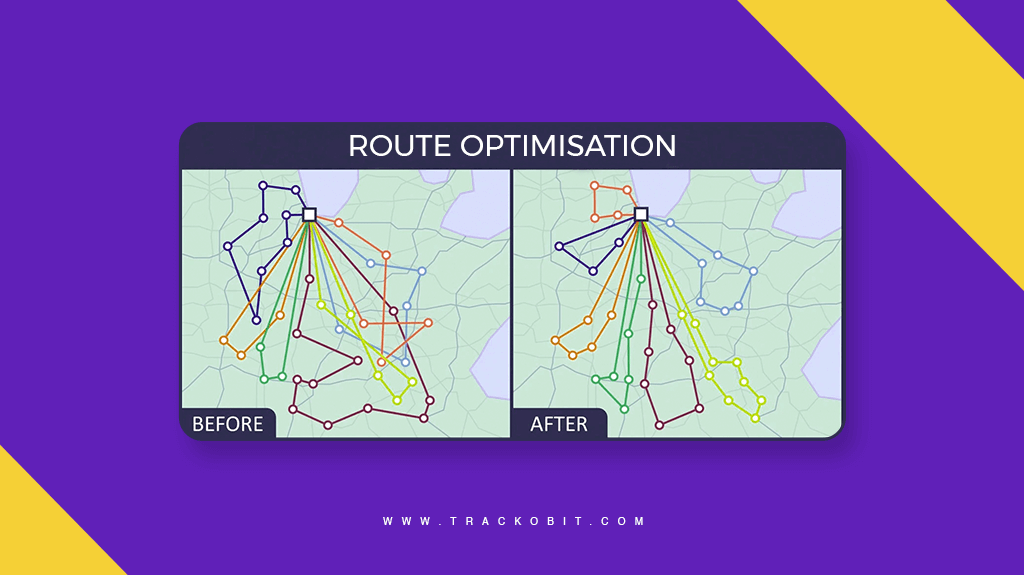
Negative Impact on Customer Satisfaction
Inefficient route planning results in delayed deliveries, leading to customer dissatisfaction. In the worst-case scenario, companies might even lose their loyal customer base, which has a negative impact on profits.
Environmental impact
Inefficient route planning affects a company’s bottom line and contributes to environmental degradation. Increased fuel consumption increases carbon emissions, contributing to an organization’s carbon footprint. And failing to fulfil their CSR, last-mile delivery companies might have to pay a hefty fine.
6 Ways How Route Optimization Software Can Boost Revenue
Last-mile delivery companies are on the lookout to curb their expenses. Here are 6 expenses the route optimisation solution cuts down on and boosts revenue.
1. Reduce Fuel Costs
Route optimization software is essential for fleet-operating businesses as it aids in planning more effective and optimal routes that eventually reduce one of the biggest operational costs, fuel. By minimising the kilometres travelled, businesses can immediately reduce fuel use and save significant money. Moreover, the software’s capacity to plan the best routes reduces vehicle wear and tear, increasing vehicle lifespan and lowering maintenance expenses. These economic actions immediately increase the revenue of delivery and logistics companies.
2. Increasing Delivery Capacity and Efficiency
Route optimisation, beyond cost reductions, also directly influences revenue potential. Streamlining routes allows firms to increase total delivery capacity without increasing their fleet by completing more deliveries in less time. This higher productivity creates opportunities for more revenue generation and optimises resource utilisation.
3. On-time Delivery for Customer Satisfaction and Retention
In the highly competitive world of service delivery, client satisfaction is critical. Route optimisation builds consumer loyalty and trust by guaranteeing deliveries within prearranged window times. Customer satisfaction increases the likelihood of referrals and repeat business, enhancing income. The software’s contribution to improving the customer experience is the strategic tool for increasing income.
4. Aiding in Data-driven Decision Making
The top route optimisation software solutions give companies useful statistics, including performance indicators and insights into operational inefficiencies. Organisations can improve overall operational efficiency by making well-informed decisions using this data. Businesses that identify areas for improvement may use data-driven decision-making to streamline operations, cut expenses, and boost profitability—all of which will contribute to revenue growth.
Also, this data is vital for route planning, bookmarking the best routes, and looking for patterns that cause lags in on-time arrivals.
5. Giving a Competitive Edge
Route optimisation software offers a clear competitive advantage in a sector where effectiveness and customer service are important differentiators. Companies that have this technology can provide services that are quicker and more dependable than those of their rivals. This increased efficiency is vital for bringing in new business and keeping hold of current clientele. This immediately affects income by securing the company’s place in a very competitive market.
6. Reduce Labour/Rider Costs
Businesses can minimise labour expenses by streamlining their operations through route optimisation. In a given amount of time, drivers make more deliveries or pickups and spend less time on the road. Because of their efficiency, businesses can assign their workers to other revenue-generating jobs or deploy fewer drivers for the same workload.
What Features to Look for in Route Optimisation Solution
When assessing route optimisation software, it’s critical to consider features that can reduce expenses and boost overall effectiveness. The following are some of the best features to search for in route optimisation software:
- On-the-go route editing: The software lets you make real-time edits to the planned routes. In case of unforeseen calamities, the software reroutes instantly.
- Add delivery and pickup stops: You can add unlimited halts or stops for delivery and pickup. You can also plan the route while considering the consumers’ availability.
- Geofencing: Don’t want your drivers deviating from the assigned driving zone? Look for software with geofencing features, which let you mark virtual boundaries around which you want your drivers to drive specifically. This feature even alerts you each time your assigned vehicle enters/exits that defined geofence.
- Quick route planning & optimization: While assessing software providers, compare the speed at which you can generate the best routes for your drivers given the average volume you manage daily. This is particularly crucial if you frequently have last-minute modifications and must immediately give your drivers new routes.
- Vital route data gained over time: Seek out routing software that can recognise patterns of travel that affect performance, such as variations in traffic during the morning and evening commutes compared to off-peak hours, school zones, and construction zones.
- Communicate arrival time estimates: Some routing software includes messaging functionality that lets your clients know estimated delivery arrival times. The best software can send additional updates if an unexpected situation impacts the original estimate.
- Performance and productivity analytics: The best routing software can help monitor numerous crucial performance indicators, including route driving times, load/unload times, fuel consumption, mileage, on-time percentages, vehicle and driver performance, and more.
Future Trends in Route Optimisation
Route optimisation software is needed, especially for last-mile delivery software, as a lot is riding on their delivery performance. The software is much in demand is is witnessing changing trends such as:
AI and Machine Learning
Route optimisation will benefit greatly from using AI-powered algorithms, enabling more precise forecasts, flexible routing plans, and proactive decision-making based on current data and past patterns.
Autonomous Vehicles
Route optimisation will modify as autonomous cars and drones become more common. This will lead to new opportunities for last-mile deliveries, greater flexibility, and reduced operating costs. These technologies will provide more economical and environmentally friendly transit options, particularly in cities.
Multi-Modal Optimization
Route optimisation will progressively involve several modes of transportation, including trucks, trains, ships, and aeroplanes, to develop more seamless and effective supply chains. By using a multi-modal strategy, companies can benefit from each mode’s advantages while cutting expenses and transit times.
Collaborative Logistics and Shared Economy
Collaborative platforms and the sharing economy will impact route optimization. These platforms allow businesses to combine their assets, resources, and transportation capacity to save costs and optimise routes. This coordinated strategy will result in less environmental impact and more effective infrastructure utilization.
Conclusion
In the changing landscape of 2026, implementing route optimization software is a well-calculated and strategic decision to increase revenue and technology. Routing software can help organisations succeed in the competitive logistics and delivery industry by:
- Lowering costs
- Improving efficiency
- Enhancing customer satisfaction,
- Supporting data-driven decisions,
- Giving them a competitive edge.
TrackoMile’s route optimization software efficiently eliminates all cost-consuming activities by assigning the fastest route to the riders. It also provides alerts and real-time tracking to ensure that riders do not deviate from the assigned routes. Schedule a demo today!
Frequently Asked Questions
-
What is the use of route optimization?
Route optimization helps plan the most optimal and economical routes. It calculates routes which makes reaching multiple locations easy and quick. Plus, it ensures that the driver doesn’t travel excessive miles, saving on excessive fuel and maintenance costs or unexpected overtime payments to drivers. In the long run, businesses can increase their productivity and profits by optimizing routes beforehand.
-
What is the best free route planning app?
If you are looking for the best route optimization software, we suggest TrackoMile. It has all the essential features and also optimises halt sequencing.
-
Why use route optimization software?
Route optimization software can deliver huge benefits to businesses, including saving them time and operating costs, uplifting customer satisfaction, increasing sales and business productivity, monitoring the delivery process, tracking areas of improvement, and much more.
-
How do I plan a route with multiple stops?
TrackoMile's route optimization solution makes planning a route with multiple stops easy. It offers tools for importing hundreds of addresses at once and instantly planning routes for multiple delivery vehicles and drivers. Schedule a free demo to learn how.
Tithi Agarwal is an established content marketing specialist with years of experience in Telematics and the SaaS domain. With a strong background in literature and industrial expertise in technical wr... Read More
Related Blogs
-
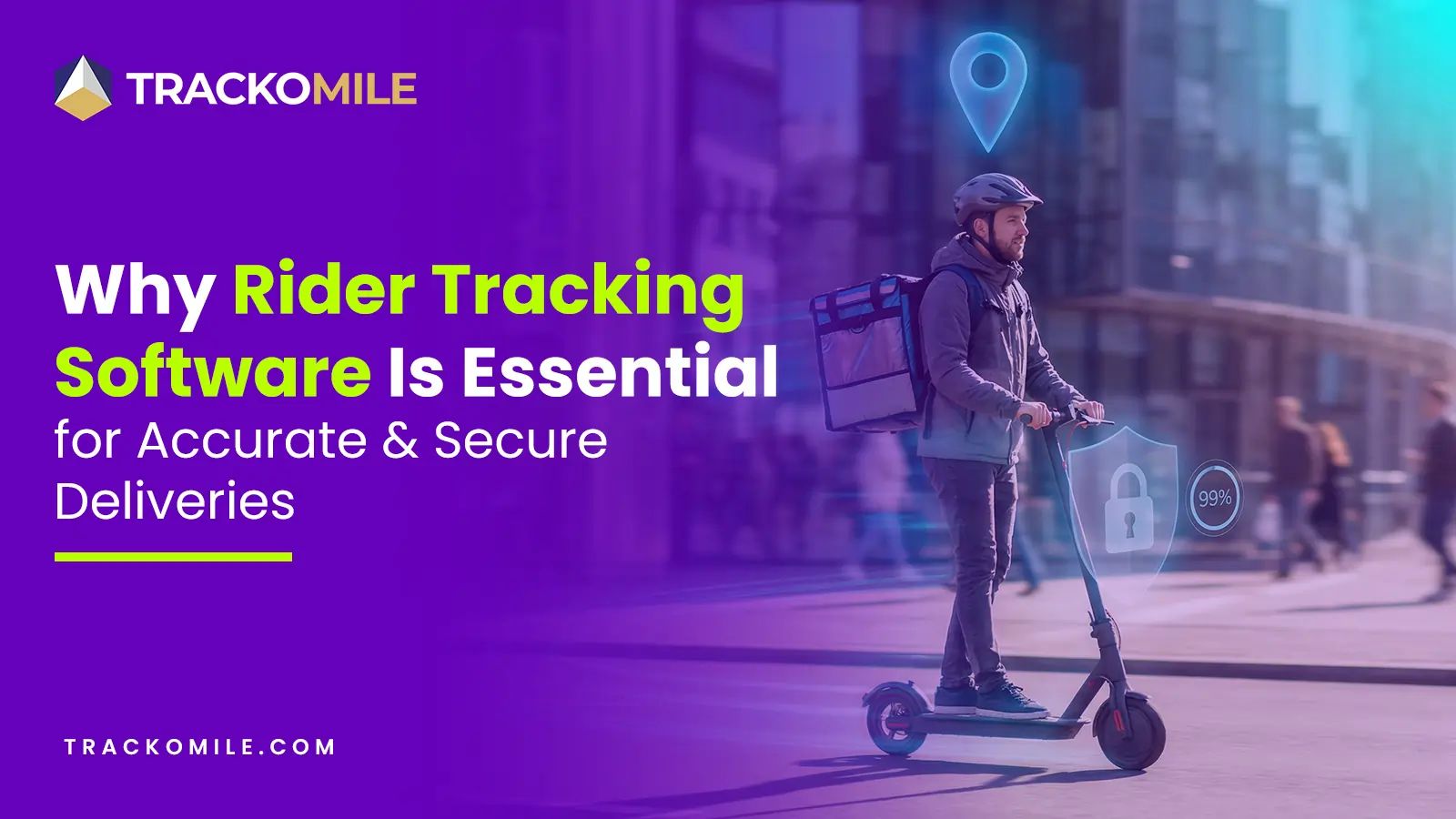
How Rider Tracking Software Improves Delivery Accuracy and Reduces Fraud
Tithi Agarwal December 8, 2025Rider tracking software improves delivery accuracy with real-time GPS visibility and automated ePOD. It also enables route optimisation and fraud…
-
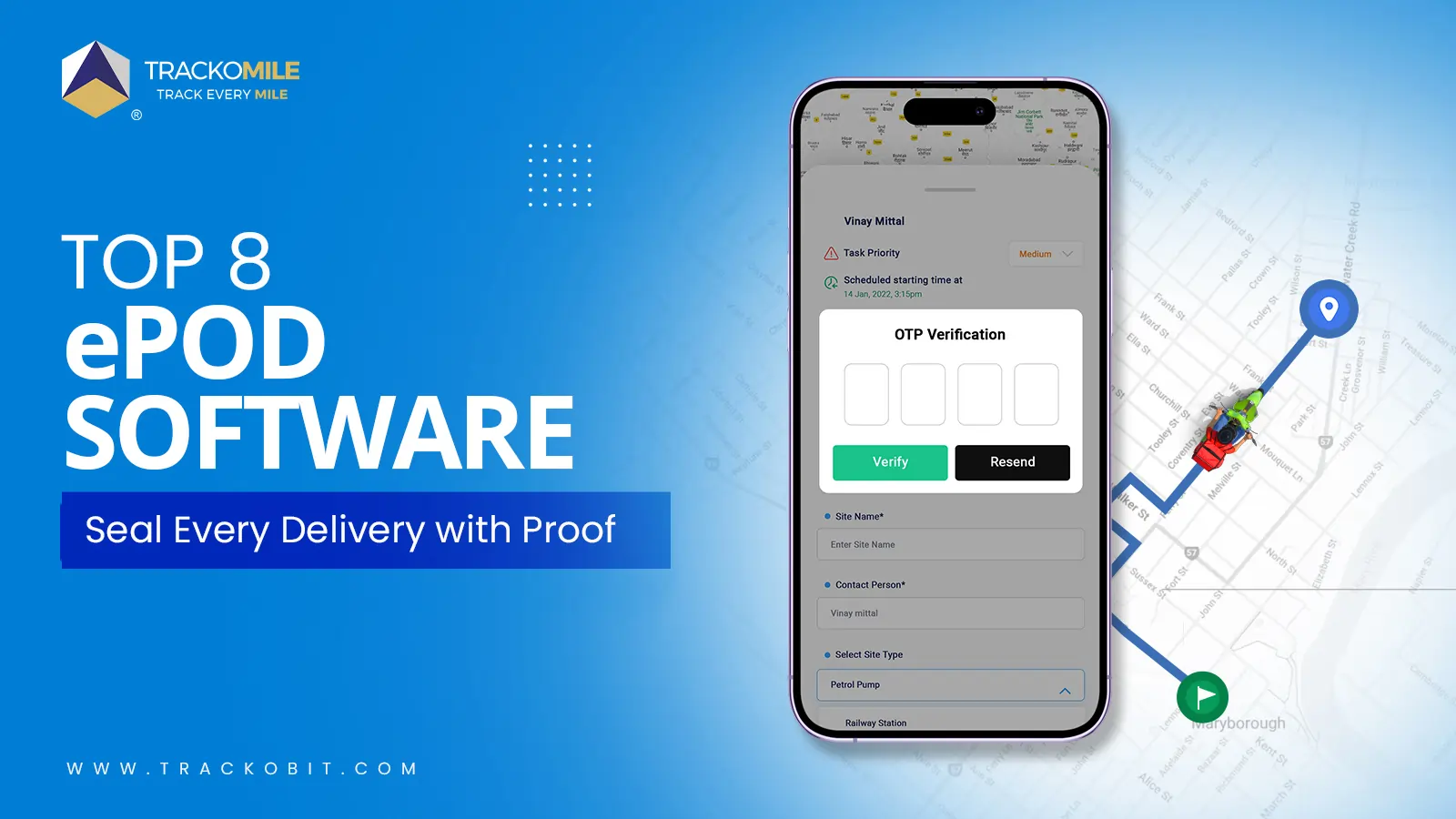
Top Electronic Proof of Delivery (ePOD) Software in 2026
Tithi Agarwal September 25, 2025Electronic proof of delivery has become the backbone of modern logistics. Explore the top 8 ePOD software in 2026 and…
-
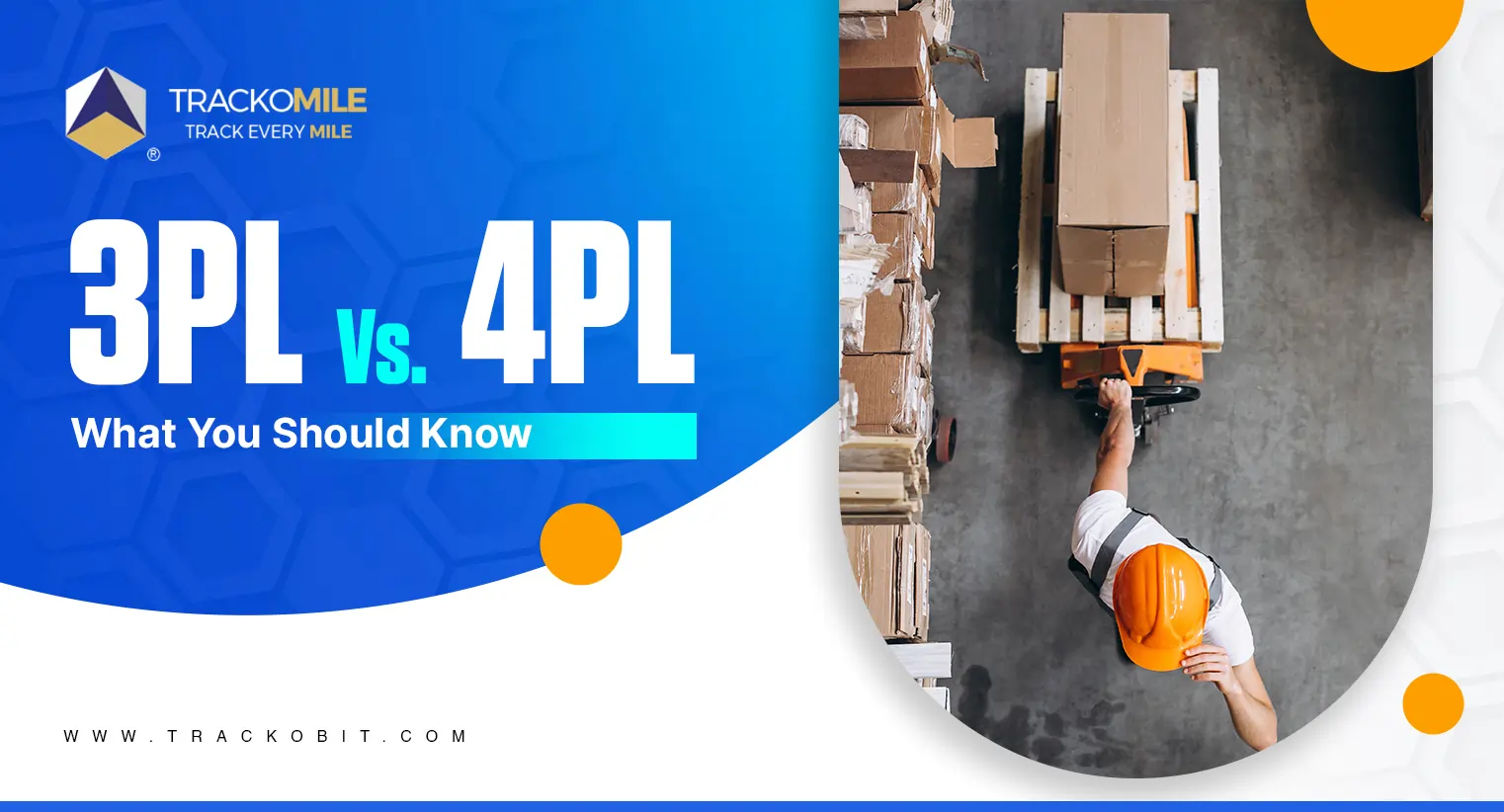
3PL vs. 4PL: Which is Best for Your Business?
Tithi Agarwal September 25, 2024Confused about choosing between 3PL and 4PL for your retail supply chain? Read this blog to find out which is…
-

What is Payload Capacity? Payload Capacity Vs. Towing Capacity
Tithi Agarwal September 10, 2024Payload capacity is the total weight a vehicle can safely carry, and it is crucial for safety and compliance. Exceeding…

Subscribe for weekly tips to supercharge your last-mile delivery.
Your inbox awaits a welcome email. Stay tuned for the latest blog updates & expert insights.
"While you're here, dive into some more reads or grab quick bites from our social platforms!"Stay Updated on tech, telematics and mobility. Don't miss out on the latest in the industry.
We use cookies to enhance and personalize your browsing experience. By continuing to use our website, you agree to our Privacy Policy.




































